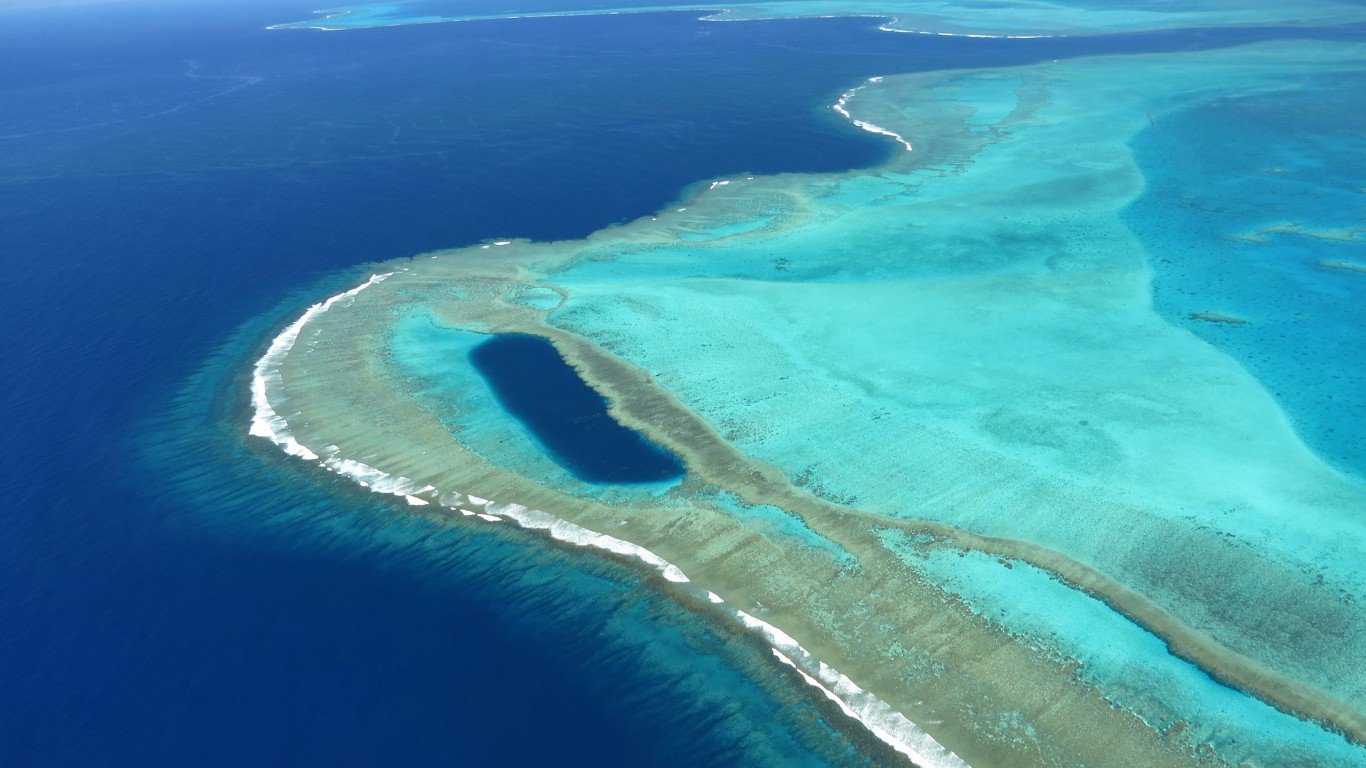
20. New Caledonia
> Population density: 39 people per square mile
> Est. population 2020: 271,960 — #179 out of 217 countries
> Land area: 7,058 square miles — #152 out of 217 countries
> Population growth, 2015-2020: 1.2%
An island nation in Oceania, New Caledonia is no larger than New Jersey. The interior of the main island is heavily forested, so the population is densest on the coastal plains, particularly the southern coast in and around the capital city of Noumea.
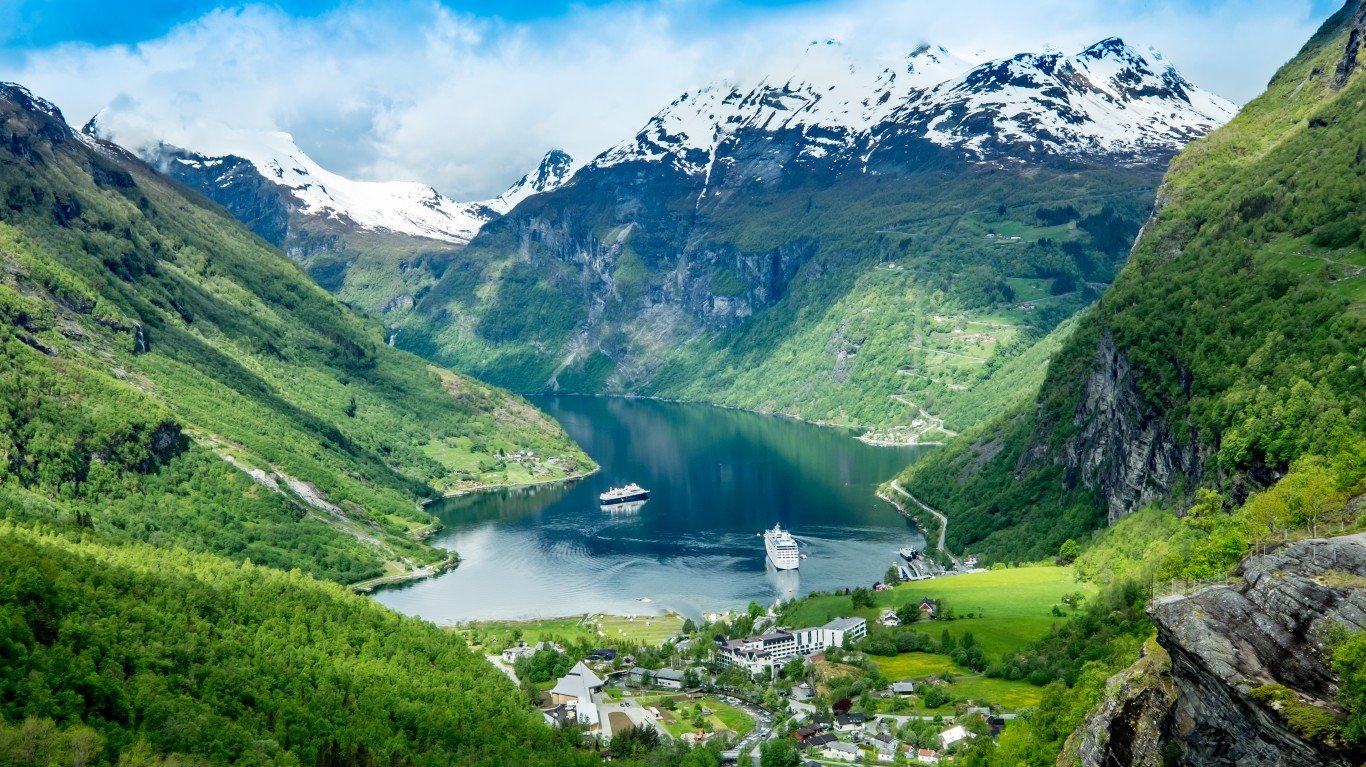
19. Norway
> Population density: 38 people per square mile
> Est. population 2020: 5,379,475 — #118 out of 217 countries
> Land area: 140,969 square miles — #62 out of 217 countries
> Population growth, 2015-2020: 3.7%
Norway’s terrain is largely glaciated, with rugged mountains and plateaus, and arctic tundra in the northern part of the country. The inhabitants are mostly based in the southern part of the country, where the climate is more temperate, with population centers scattered along the coast.
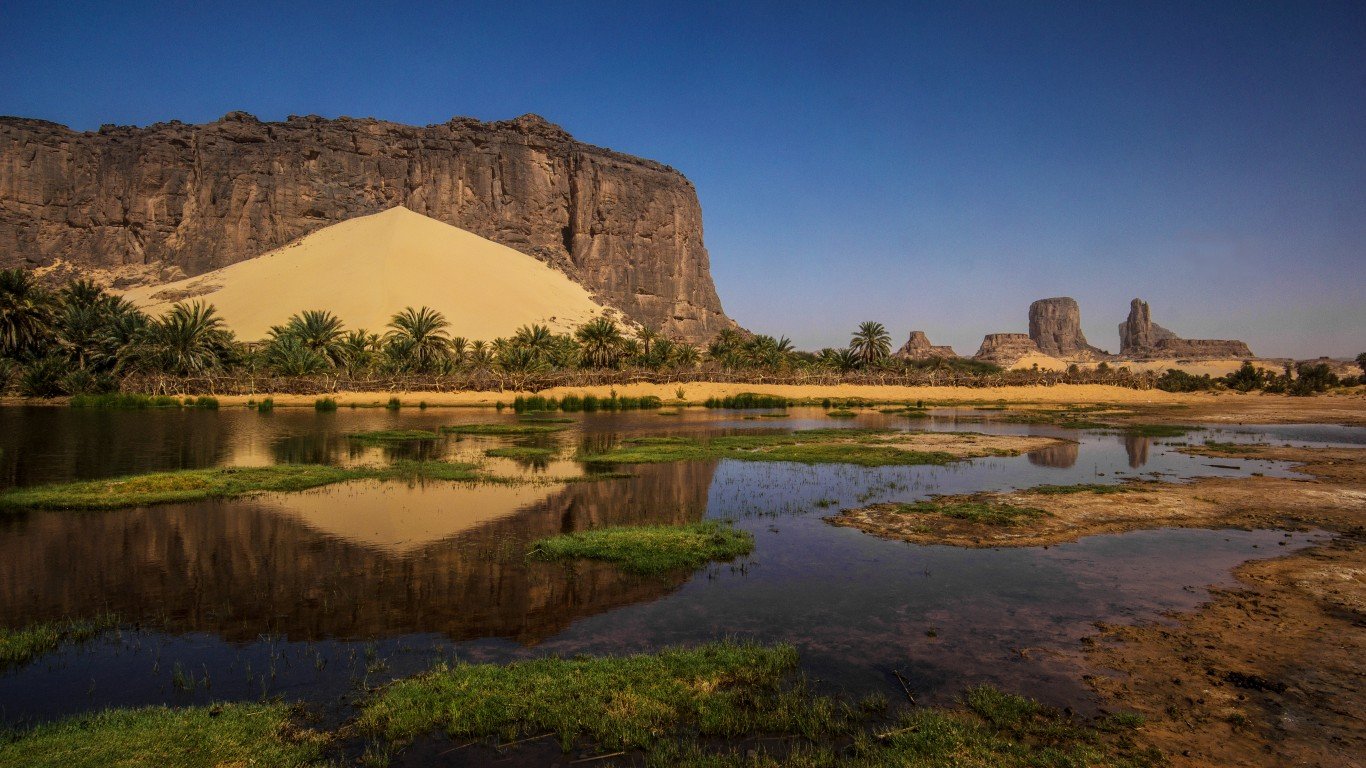
18. Chad
> Population density: 34 people per square mile
> Est. population 2020: 16,425,859 — #71 out of 217 countries
> Land area: 486,180 square miles — #21 out of 217 countries
> Population growth, 2015-2020: 16.4%
The largest landlocked country in Africa, Chad’s landscape and climate vary from desert in the north, to plains in the interior, tropical lowlands in the south and mountains in the northwest. The northern deserts are the least populated, while the southwestern region near Lake Chad is the most populous. Chad has some of the highest infant and maternal mortality rates in the world, due to lack of obstetric care.
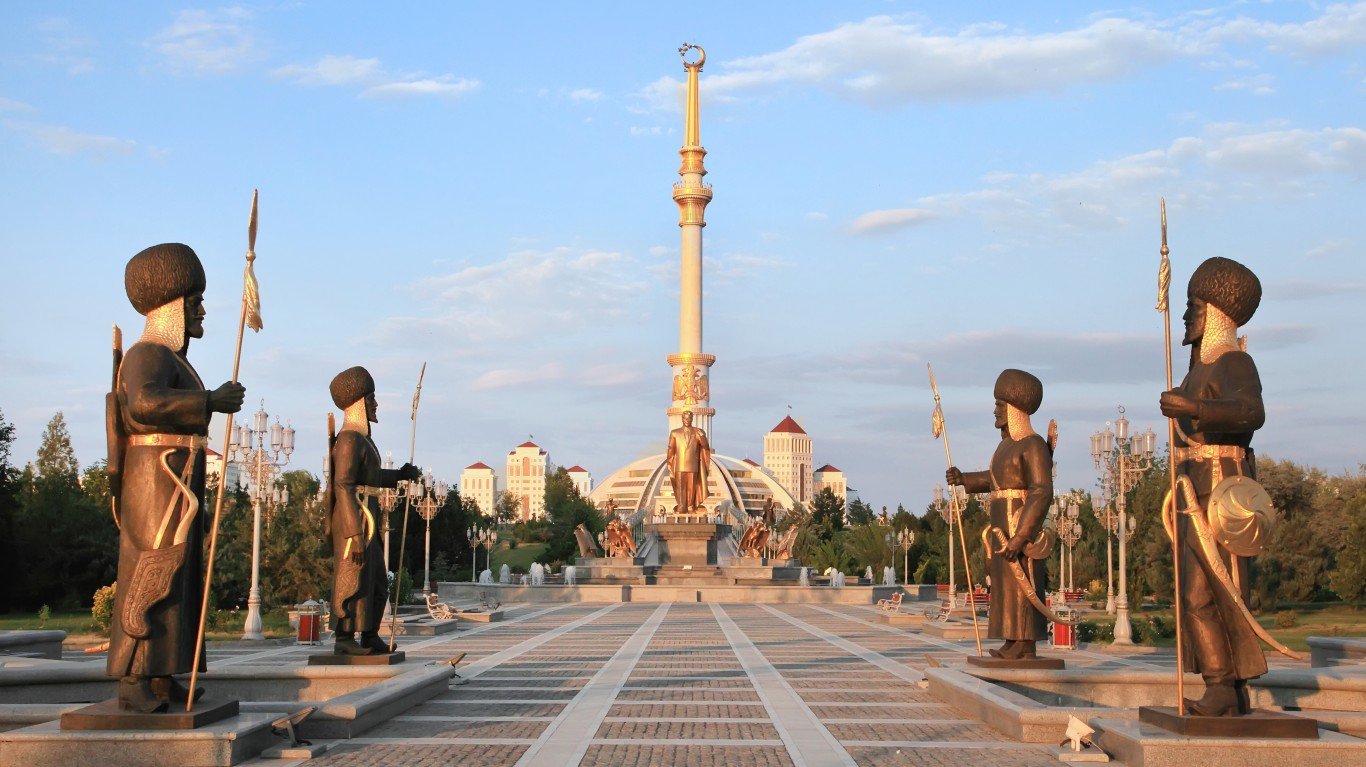
17. Turkmenistan
> Population density: 33 people per square mile
> Est. population 2020: 6,031,187 — #112 out of 217 countries
> Land area: 181,441 square miles — #53 out of 217 countries
> Population growth, 2015-2020: 8.4%
Turkmenistan, a country roughly the size of California, consists largely of desert and mountains. About half the population lives in and around the capital of Ashgabat, and most of the population centers lie in the oasis of the eastern plateau. The western and central regions of the country are taken up by the Garagun Desert.
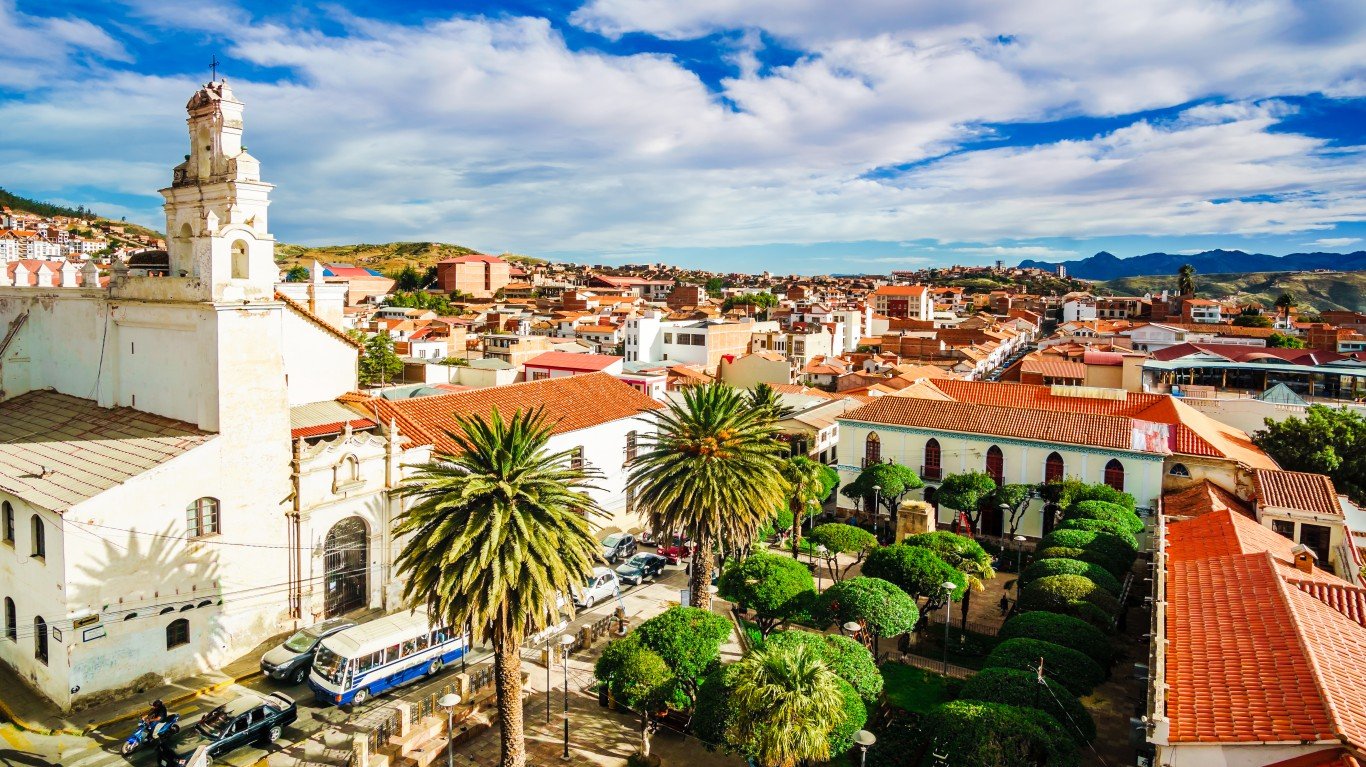
16. Bolivia
> Population density: 28 people per square mile
> Est. population 2020: 11,673,029 — #79 out of 217 countries
> Land area: 418,264 square miles — #27 out of 217 countries
> Population growth, 2015-2020: 7.4%
Bolivia’s climate varies from tropical to cold and arid depending on altitude, and much of the country consists of the rugged Andes mountains and dense forest. About 70% of the country’s population lives in the urban centers of La Paz, Santa Cruz, and Cochabamba.






